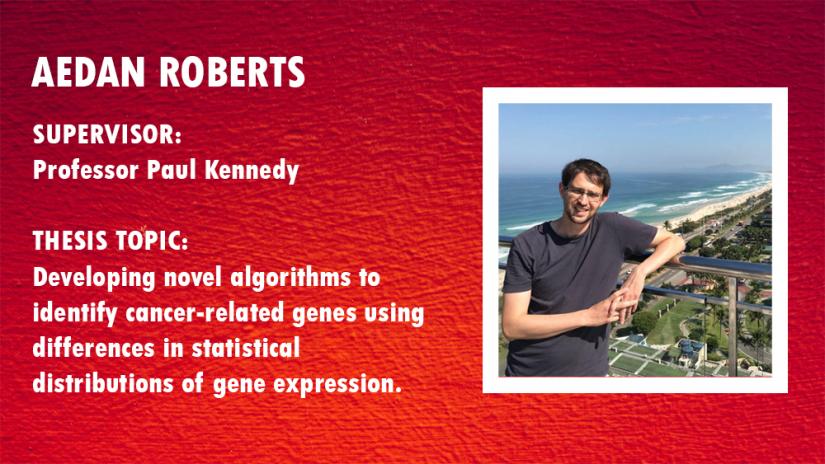
Image: One of the perks of research. Aedan at a conference in Rio de Janeiro in 2018, where he presented some initial results from his PhD.
What is the most rewarding aspect of your research?
I have a background in molecular biology and statistics, so it’s been really good to be able to combine those, and add in some new computational skills, to do something that can make a real contribution to cancer research. It’s been particularly rewarding to put the methods that I’ve been working on into practice and see how they can identify new knowledge.
What are the real-world applications of your research?
The methods that I’m developing can be directly used by cancer (and other disease) researchers to identify genes that may be able to provide clues to the biology of the disease, or potential drug targets. It’s really a way of generating hypotheses that can then be explored further in a number of different ways to gain new knowledge about disease processes and treatment.
What ideas do you have for future research?
Apart from continuing to improve the speed and computational efficiency of the methods, future projects will look at extending them by seeing if we can use the genes identified to classify related cancer subtypes that are difficult to distinguish clinically, or to predict how patients might respond to different therapies. Another possible direction is to look at different types of data, such as single-cell RNA-sequencing, which gives a much more detailed picture of an individual tumour.
Are you involved in collaborative research?
My co-supervisor, A/Prof Daniel Catchpoole, is head of the Tumour Bank at the Children’s Hospital at Westmead. That connection gives us access to a large bank of tumour samples and genetic data from those samples, along with detailed clinical information, which is an invaluable resource for putting the methods that I’m working on to practical use.
What inspired you to undertake a PhD in computer science?
Coming from a background in biology, and finishing my degree at a time when sequencing a whole human genome was out of reach for most researchers, I had never really considered computer science as an area that I might get involved in. But as the amount of data routinely produced in labs all around the world exploded, I realised that with the skills that I – and most biologists – had, that data was impenetrable. Through studying statistics, I learned that computational methods are really the only way that we can properly organise and make sense of huge biological datasets, and so a PhD combining biology, statistics and computer science seemed like a natural next step.

